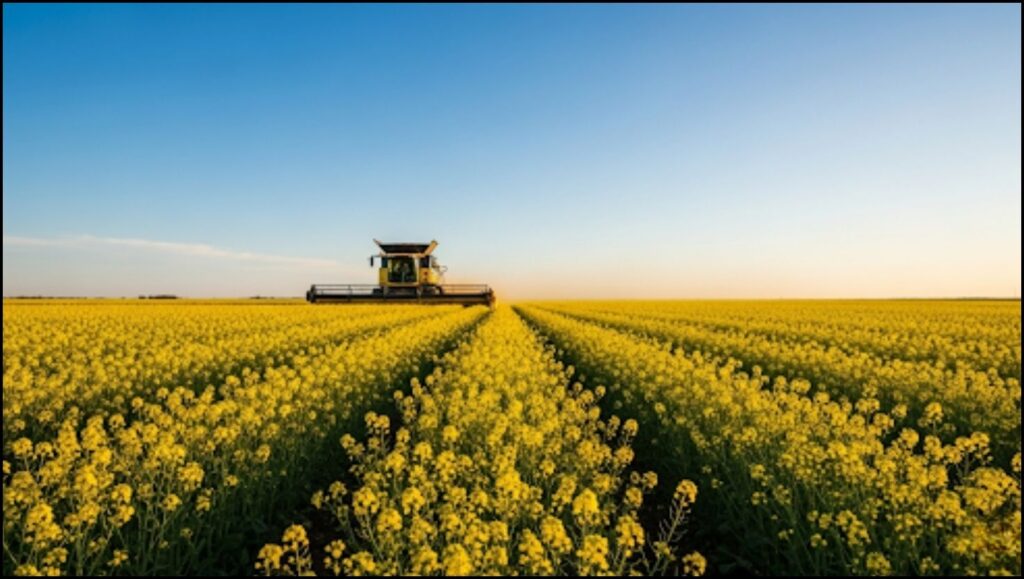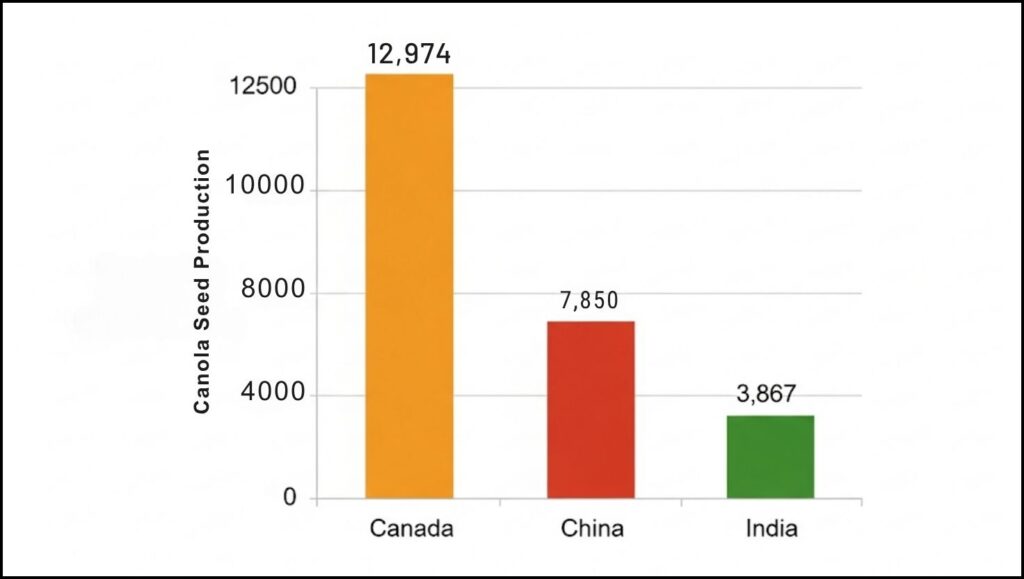Canada is the world’s largest canola oil producer, a position it has held for decades, shaping the global market for one of the most widely used cooking oils. The country’s vast prairie provinces and advanced agricultural research have solidified its dominance, with Canadian-grown canola seed and its resulting oil and meal products being major exports to nations across Asia, Europe, and the Americas.

A Domestic Crop with Global Reach
The story of the canola oil market is intrinsically linked to Canada, where the crop was developed in the 1970s. Scientists at the University of Manitoba refined the rapeseed plant through traditional breeding methods to create a new variety with significantly lower levels of erucic acid and glucosinolates, making it safe for human and animal consumption. This new cultivar was officially named “canola,” a portmanteau of “Canadian oil, low acid.”
According to the Canola Council of Canada, the country’s farmers harvested 17.8 million metric tonnes of canola in 2024, a testament to the crop’s economic importance. The majority of this production is concentrated in the provinces of Saskatchewan, Alberta, and Manitoba, which together form the heart of the country’s agricultural sector. This impressive output not only meets domestic demand but also positions Canada as the world’s leading exporter of both canola seed and its refined products, including oil and meal.
Canola is more than just a source of oil; it is a critical “break crop” in crop rotation cycles. This means it helps improve soil health and interrupts disease cycles that affect other staple crops like wheat and barley, providing a significant benefit to the broader agricultural ecosystem. The versatility of the crop contributes to its widespread adoption among Canadian farmers, further reinforcing its production volume.

Key Competitors and Market Dynamics
While Canada is the largest producer, other nations play crucial roles in the global market. China, the second-largest producer, focuses heavily on domestic consumption. India and Australia are also significant producers, with Australia being a major exporter to the European Union and Asian markets, often competing directly with Canadian exports.
The European Union collectively produces a large volume of rapeseed, with Germany and France among the top producers. However, this production is dispersed among multiple nations, and a significant portion is directed toward biofuel production, creating a distinct market segment from the food-grade oil market that Canada largely supplies.
“Canada’s strength lies in its export-oriented model and the consistent quality of its canola,” said Dr. Jane Harrison, a senior agricultural economist at the University of Saskatchewan. “Unlike some other major producers that consume most of what they grow, Canada has built an extensive and reliable supply chain that feeds into global markets, from the U.S. and Mexico to major importers in Asia like Japan and China.”
The global market for canola oil is influenced by a complex interplay of factors, including global demand for vegetable oils, fluctuating crop yields due to weather patterns, and international trade policies. For instance, trade disputes between Canada and China in recent years have highlighted the market’s sensitivity to political tensions, affecting the flow of seed exports.
The Economic and Agricultural Significance
The production and processing of canola contribute billions of dollars to the Canadian economy. The domestic crushing industry, which processes the seed into oil and meal, is a vital part of this value chain. In 2024, Canadian processors crushed a record 11.4 million tonnes of canola, a significant increase from the previous year, as reported by Statistics Canada. This domestic processing adds significant value before the products are exported, creating jobs and economic activity within Canada.
The co-product, canola meal, is a high-protein feed ingredient widely used in livestock, poultry, and aquaculture industries. This dual-product nature of the canola seed—providing both a high-quality oil and a valuable feed source—enhances its economic importance.

The United States is a key trading partner, serving as the largest market for Canadian canola oil and meal. Mexico and Japan are also major importers of Canadian canola seed and processed products. The strong trade relationships and the proximity of the U.S. market are key components of Canada’s success.
Looking Forward: Trends and Challenges
The global demand for healthier cooking oils and sustainable biofuels continues to drive the canola market. As consumer awareness of heart-healthy fats increases, the demand for canola oil—known for its low saturated fat content and high levels of monounsaturated fats—is expected to grow. However, the industry faces challenges, including climate change impacts on crop yields and the need for continuous investment in research and development to maintain its competitive edge. Developing new seed varieties that are more resilient to drought and pests is a priority for Canadian researchers. The industry is also exploring new applications, such as using canola oil as a feedstock for sustainable aviation fuel, which could open up new markets and further boost demand.
“Canola’s future is closely tied to its role in sustainable energy and healthy food systems,” said Dr. Ken Riley, a plant science researcher at the University of Alberta. “Innovations in genetics and agronomy will be key to ensuring the industry can continue to meet growing global needs while adapting to environmental pressures.”
The final paragraph of the article will serve as a concluding statement on the current state of the market, summarizing the key takeaways and offering a brief forward-looking perspective on the topic. It will not introduce new facts but rather reinforce the core points of the article.
The Global Market: A Look at the World’s Top Cauliflower Producer
